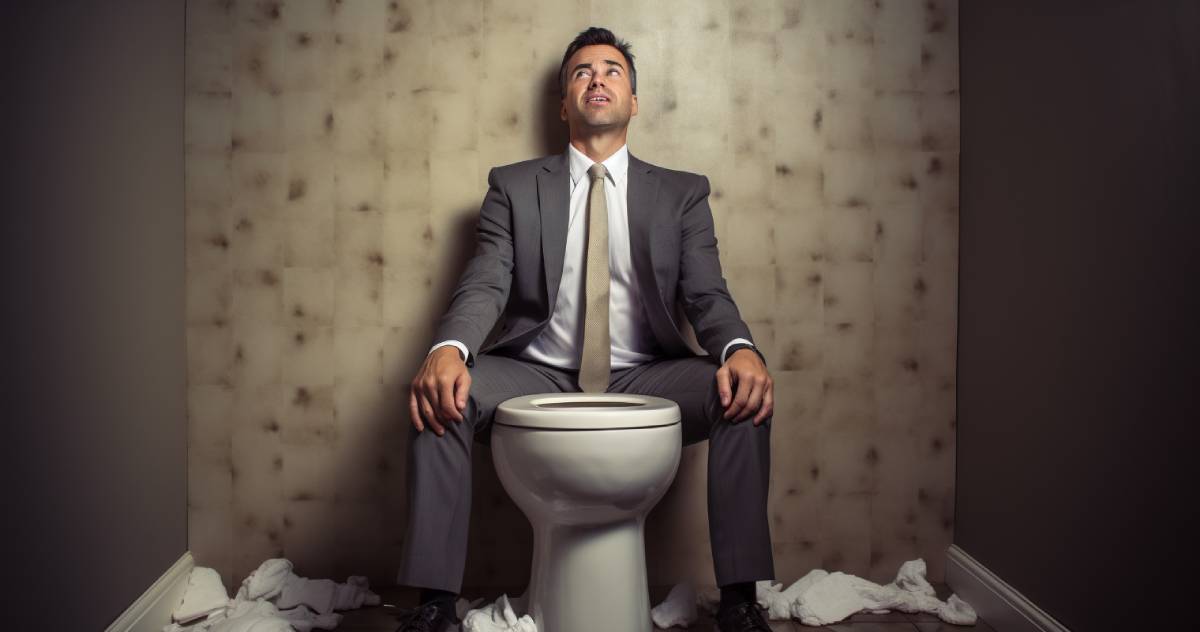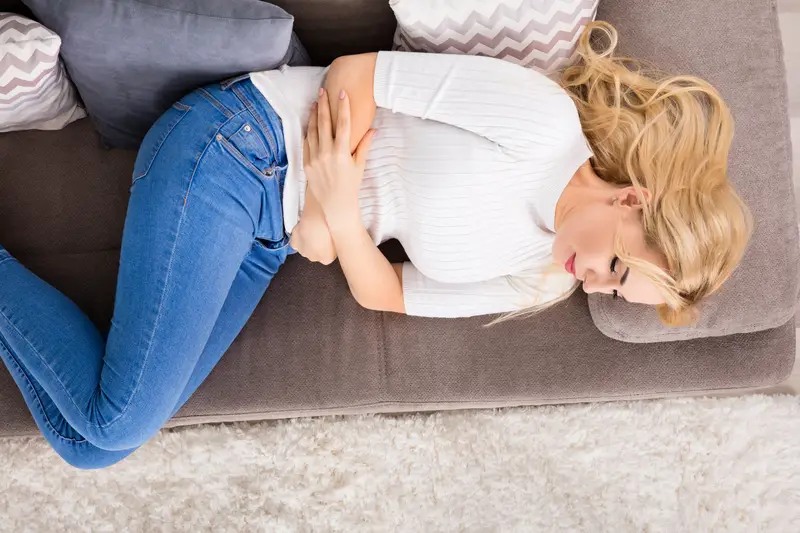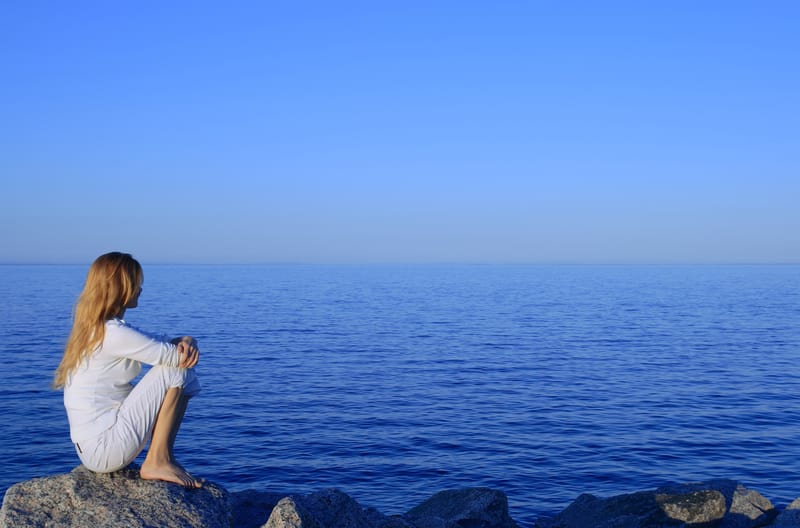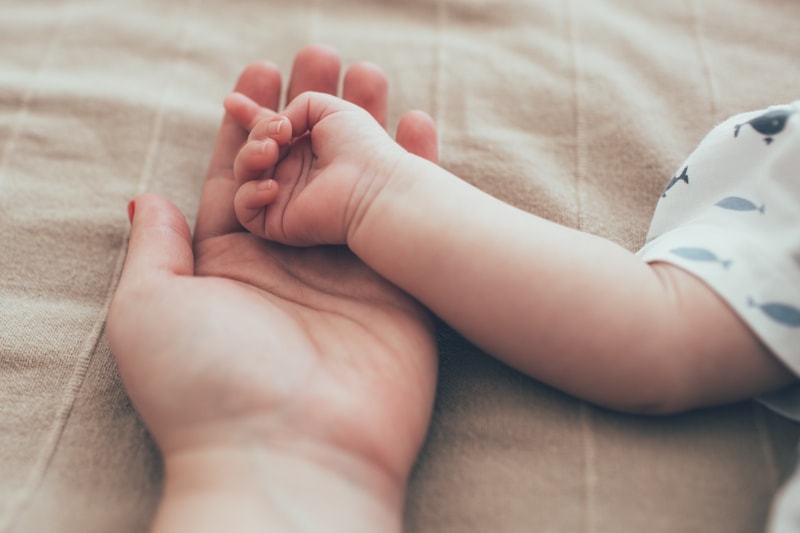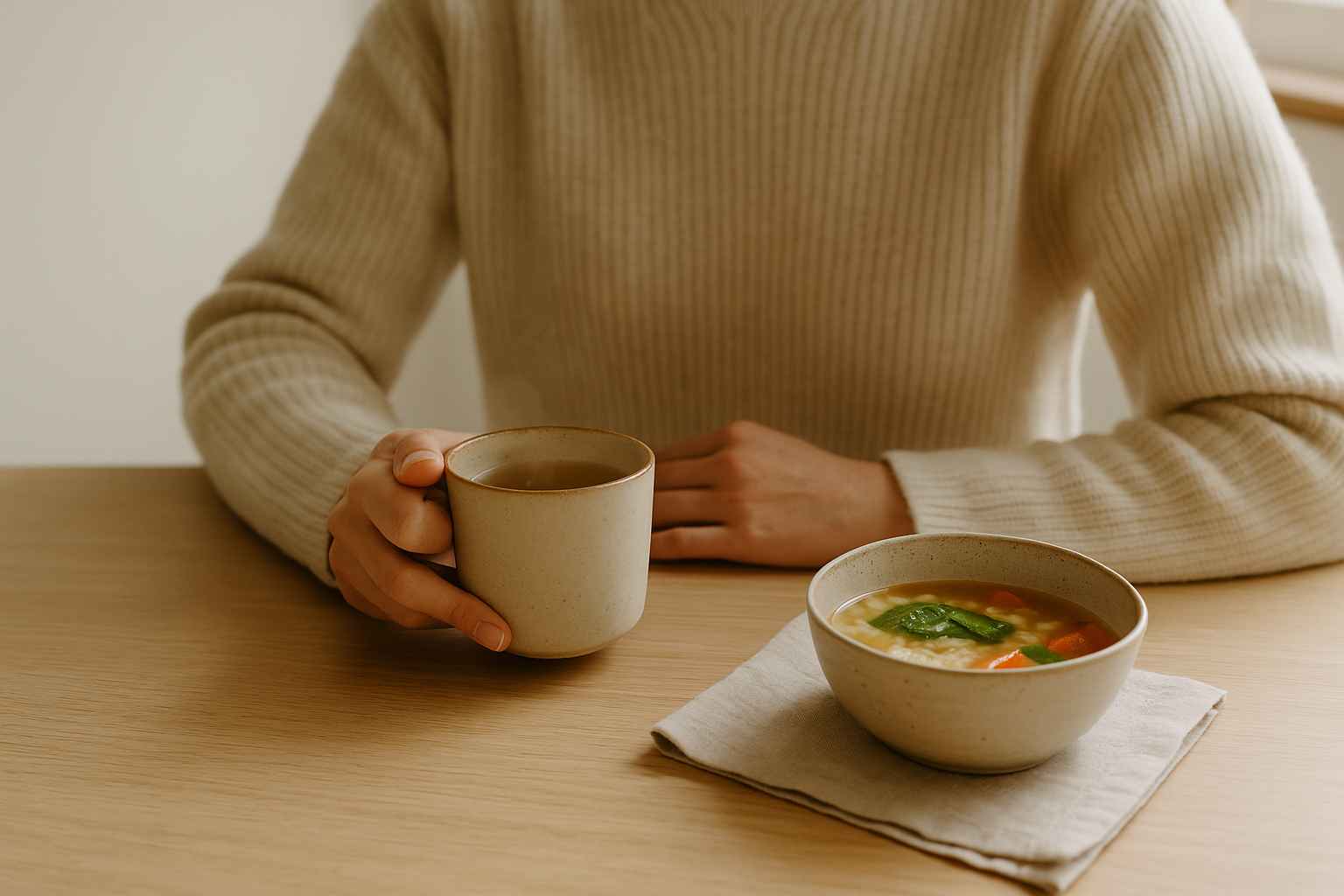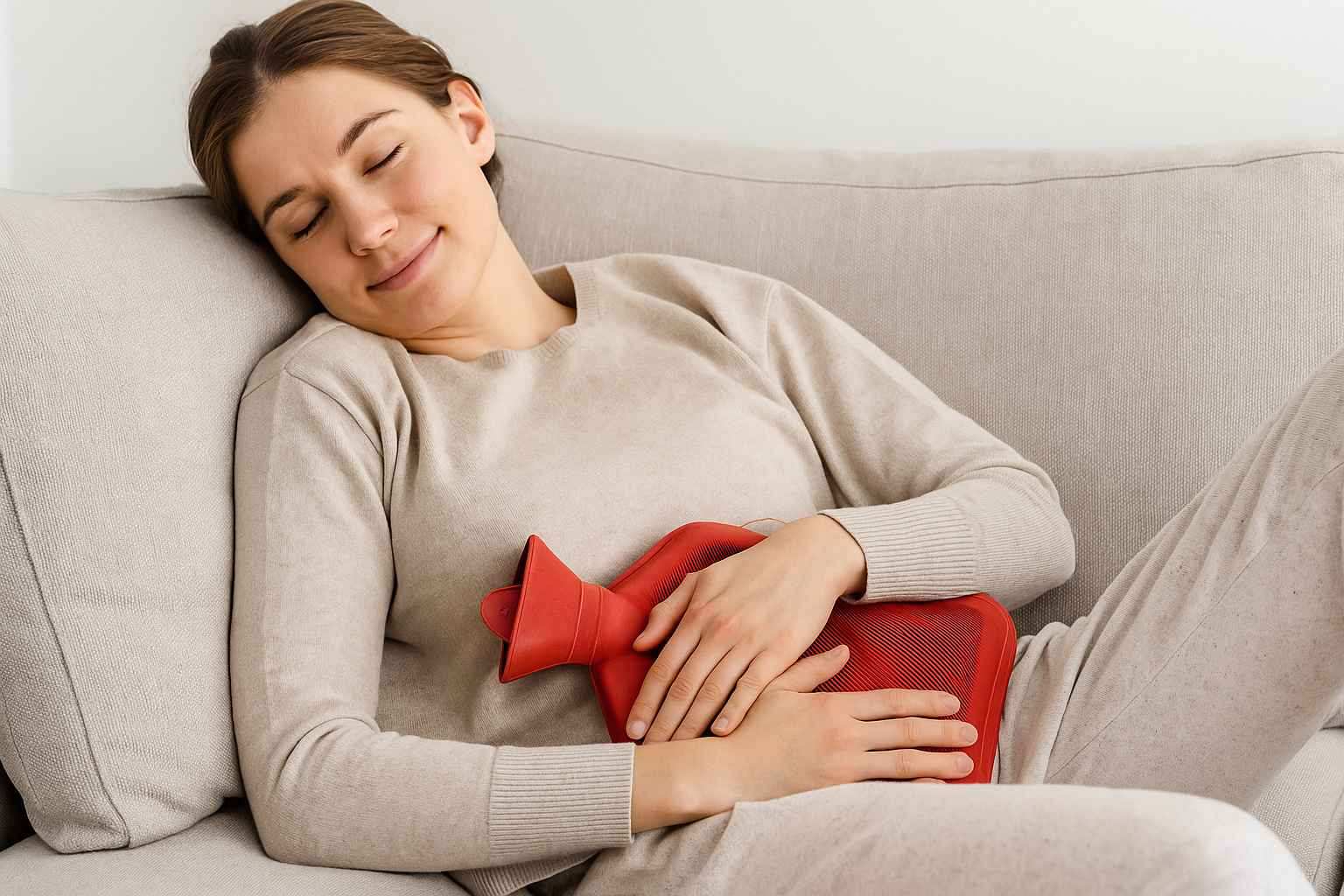Acupressure Points for Slow Transit Constipation are specialized techniques in Traditional Chinese Medicine that target specific points on the body to alleviate digestive issues. Acupressure involves applying pressure to these points, stimulating the body’s natural healing processes, and facilitating bowel movement, which is particularly beneficial for slow transit constipation. This approach can be a gentle yet effective alternative to conventional treatments. For ease of reference, a quick table following this introduction provides a concise guide to these acupressure points. For a broader understanding of how acupressure can aid in constipation relief, please visit Acupressure Points For Constipation, which provides detailed information on various acupressure points and their benefits.
| Acupoint | Description |
|---|---|
| Bl-22 | Located on the lower back, 1.5 cun lateral to the lower border of the spinous process of the 1st lumbar vertebra. Regulates water passages and treats abdominal issues like edema and dysuria. |
| Bl-23 | Found on the lower back between the second and third lumbar vertebrae, two finger widths from the spine. Known as the Sea of Vitality, it strengthens the core and reduces lower back pain. |
| Bl-25 | Positioned 1.5 cun lateral to the spine, at the junction of the 4th and 5th lumbar vertebrae. Effective for relieving constipation and treating abdominal distention and diarrhea. |
| Bl-32 | Located midway between the dimples above the buttocks and the lumbar spine. Addresses local low back or sacrum problems and various genital and urinary-related disorders. |
| ST-25 | Situated in the middle of the abdomen, 2 cun lateral to the umbilicus. A key point for treating diseases related to the Large Intestine Meridian like abdominal distention and constipation. |
| ST-27 | Located on the lower abdomen, 2 cun below the center of the umbilicus, 2 cun lateral to the anterior median line. Strengthens the kidney and regulates stomach Qi, treating lower abdominal pain and dysuria. |
| SP-14 | Found on the lower abdomen, 1.3 cun below SP 15 and 4 cun from the anterior midline. Known as the Abdominal Knot, it’s effective for treating abdominal pains, constipation, and hernia. |
Acupoint: Bl-22 (Other Names: Urinary Bladder-22/San Jiao Shu/Sanjiao Transporter)
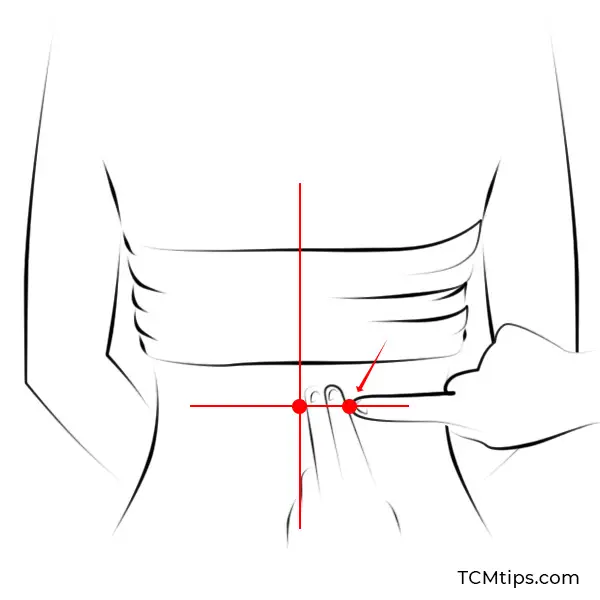
BL-22 is of the bladder meridian and is called Sanjiaoshu in China. This means Sanjiao Transporter in English. You can find this acupressure point on the lower back. It is located at 1.5 cun, or two fingers width, lateral to the lower border of the spinous process of the 1st lumbar vertebra.
As the Sanjiao Transporter, BL-22 works to regulate and move the San Jiao, thus opening and regulating water passages in the body. It treats edema, dysuria, abdominal distention, borborygmus, diarrhea, and dysentery. Research shows that BL-23 can also prevent bone loss and structural changes by suppressing bone resorption.
Acupoint: Bl-23 (Other Names: Urinary Bladder-23/Shen Shu/Kidney Transporter)
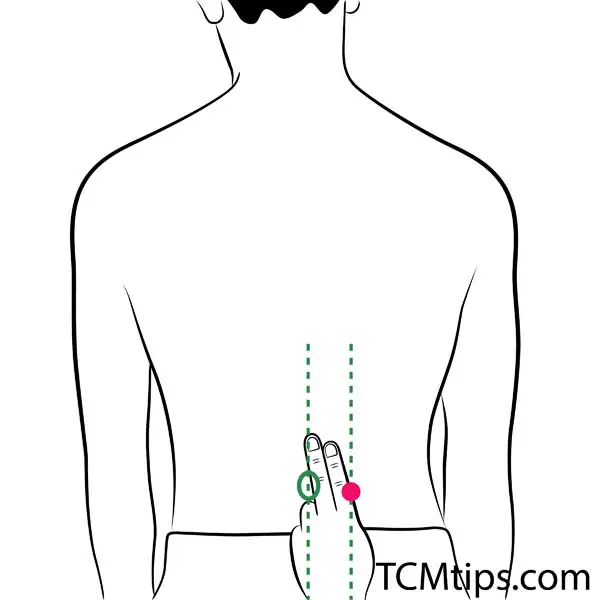
Bladder 23 is the 23rd acupressure point of the bladder meridian and brother to BL-22. It is also referred to as the Sea of Vitality. It is located at the waist, on the lower back, between the second and third lumbar vertebrae, just two finger widths from the spine. It is on the same level as your belly button.
Pressing down lightly with your index or middle finger on this acupressure point for constipation and rubbing gently in a circular motion can help strengthen the core and reduce lower back pain.
Together with Kidney 9 acupuncture point, TCM practitioners often recommend using them to rejuvenate your hair.
Acupoint: Bl-25 (Other Names: Urinary Bladder-25/Da Chang/Large Intestine Transporter)
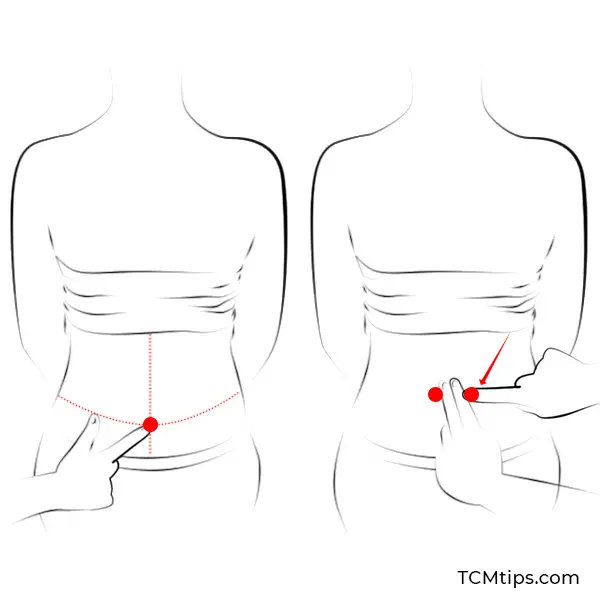
This is another bladder meridian acupoint that is effective for relieving constipation. Its other name is Dachangshu, which translates to Large Intestine Shu in English. This acupoint is located 1.5 cun lateral to the spine, at the junction of the 4th and 5th lumbar vertebrae. It is the point tucked into space above the sacrum and inside the ileum.
To activate this acupressure point to treat abdominal distention, diarrhea, and constipation, apply direct pressure on the acupoint.
Acupoint: Bl-32 (Other Names: Urinary Bladder-32/Ci Liao/Second Crevice)
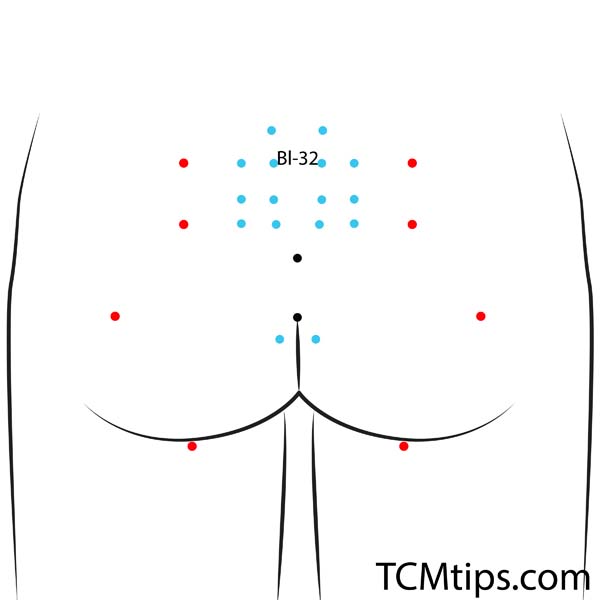
BL-32 is yet another bladder point for constipation. Its English name is Second Bone Hole, located midway between the dimples above the buttocks and the lumbar spine. It is not the dimple.
Bladder 32, also called the Ciliao (second crevice), when pressed firmly on the point and massaged, solves local low back or sacrum problems. It also solves most genital and urinary-related disorders, as well as irregular cycles, painful menstruation, and blood stagnation.
Acupoint: ST-25 (Other Names: Stomach-25/Tian Shu/Celestial Pivot)
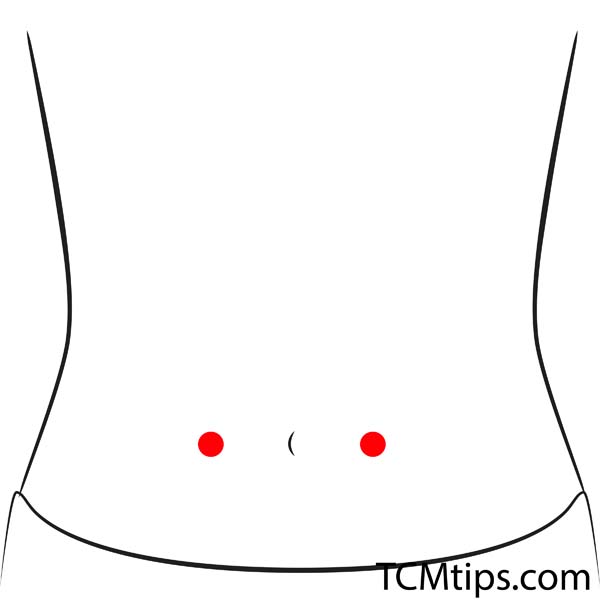
Again, I have the St-25 on my list, which solidifies its place as one of the most important acupressure points for constipation. Tianshu, or Celestial Pivot, as it is called in English, is located in the middle of the abdomen, 2 cun lateral to the umbilicus.
It is a Front-Mu point of the Large Intestine Meridian, which makes it practical for treating diseases of the affected Zang-Fu organ and those of Yang meridians and collaterals. These diseases include abdominal distention, borborygmus, pain around the umbilicus, constipation, diarrhea, and dysentery.
Acupoint: ST-27 (Other Names: Stomach-27/Da Ju/Great Bulge)
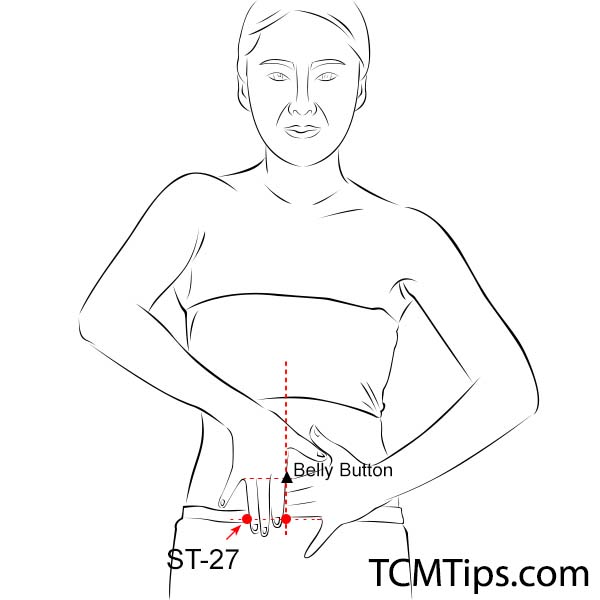
Still of the stomach meridian, St-27 is another of the poop button acupressure points. It is called Daju or Great Bulge in English. It is located on the lower abdomen, 2 cun below the center of the umbilicus. It is 2 cun lateral to the anterior median line and level with Shimen REN-5.
The Great Bulge strengthens the kidney and essence and thus regulates stomach Qi. For this reason, this acupressure point is suitable for treating lower abdominal distention and pain, dysuria, hernia, premature ejaculation, and impotence. You can also refer to these Top 10 Acupressure Points To Relieve Body Pains And Aches.
Acupoint: SP-14 (Other Names: Spleen-14/Fu Jie/Abdomen Stagnation)
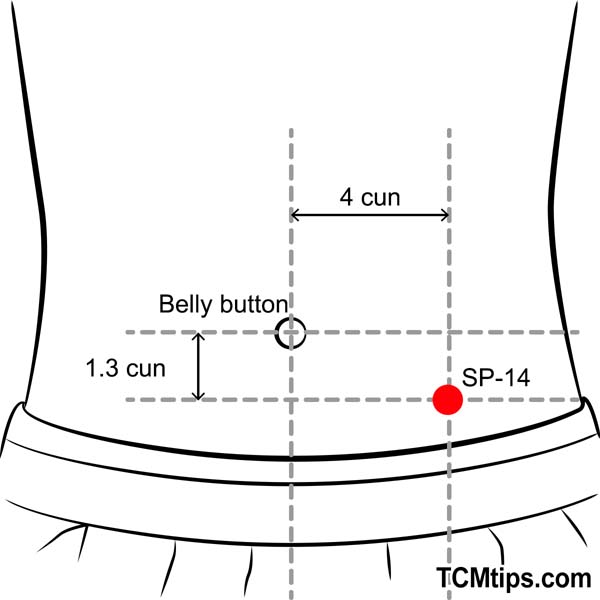
This acupoint is called Fujie, which translates to Abdominal Knot in English. To satisfy its name, SP-14 is located on the lower abdomen, 1.3 cun below SP 15 and 4 cun from the anterior midline of the body. Its position alone sets it up as the poo button acupoint. When activated, this acupuncture point effectively treats pains around the umbilical region, abdominal distention, diarrhea, constipation, and hernia.
When to Seek Medical Consultation
While acupressure can effectively manage slow transit constipation, it’s important to recognize when to seek medical consultation. If you experience severe pain, significant changes in bowel habits, blood in stools, or if your symptoms persist despite using acupressure, it’s crucial to consult a healthcare professional. These symptoms can be indicative of more serious conditions that require medical intervention. Remember, acupressure is a complementary therapy and should be used with professional medical advice, especially in chronic or severe digestive issues.

Try our Anti-Aging Gua Sha Tool designed to bring out your skin’s natural glow.
Best Gua Sha Product- Anti-Aging: The tool is designed to target 11 specific aging signs such as wrinkles and sagging skin. By following the 7-step routine, users can improve skin firmness and reduce fine lines naturally.
- Enhances Skincare Routine: It works effectively with serums and lotions, boosting absorption and efficacy of skincare products.
- Visible Skin Improvement: Users can expect a smoother complexion, reduced puffiness, and a more youthful appearance.
 P. Sze
P. Sze 